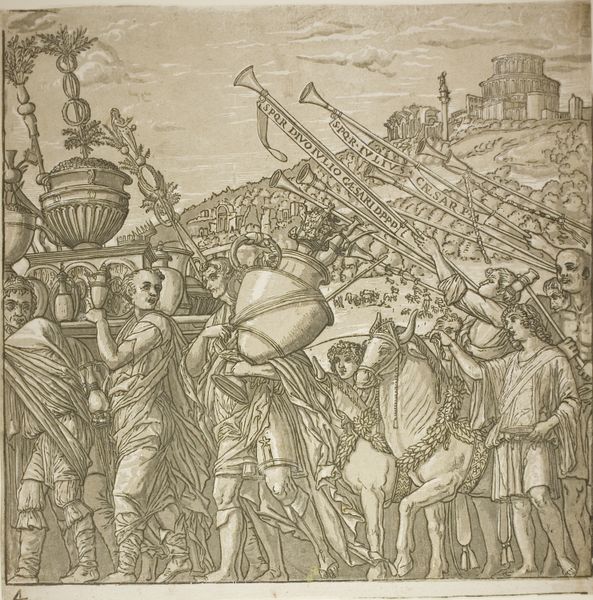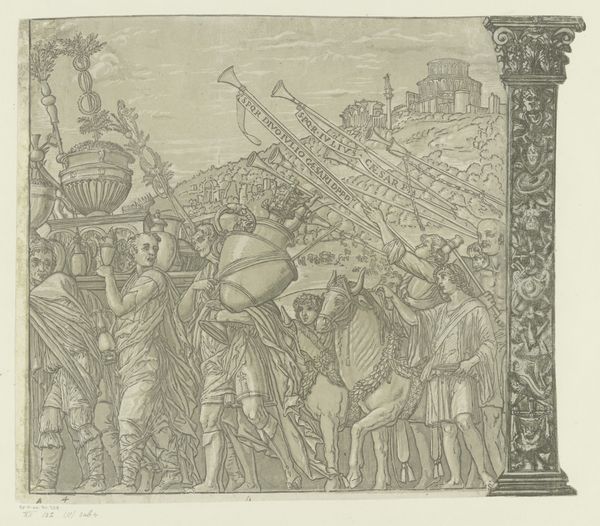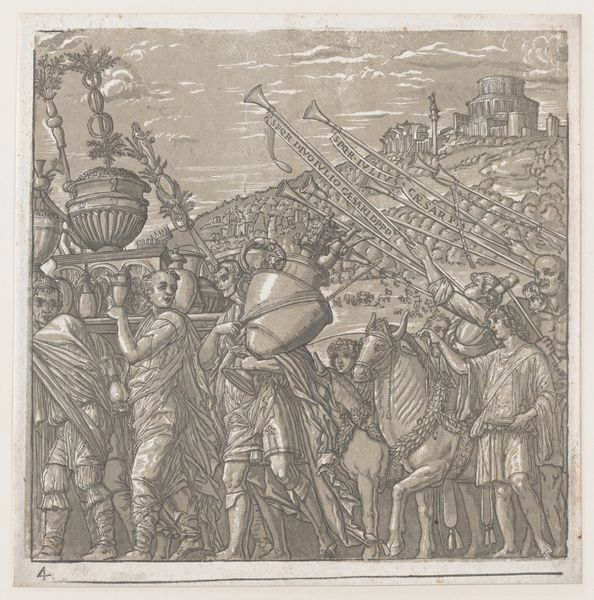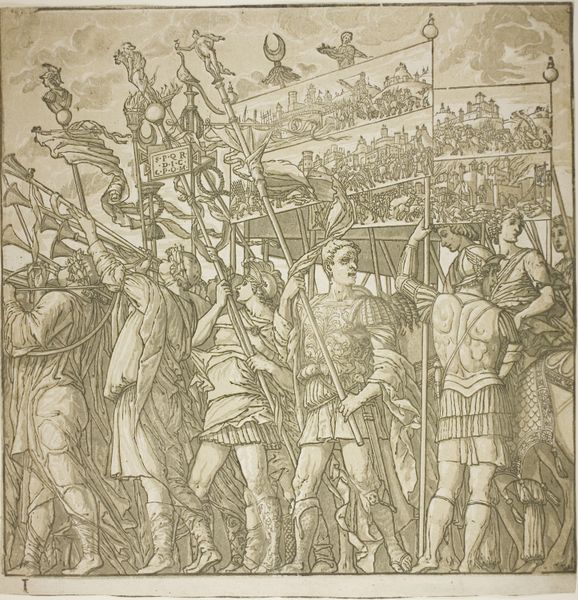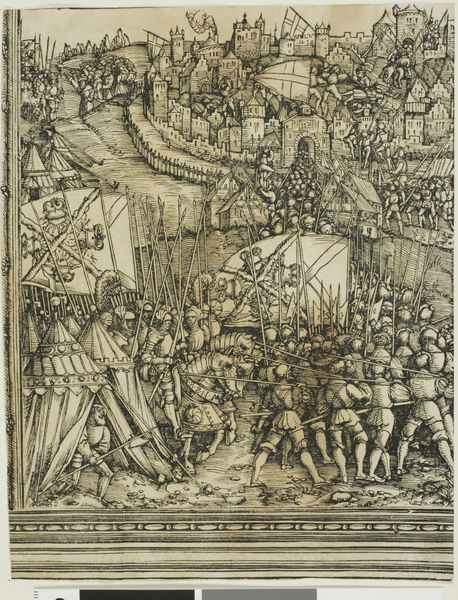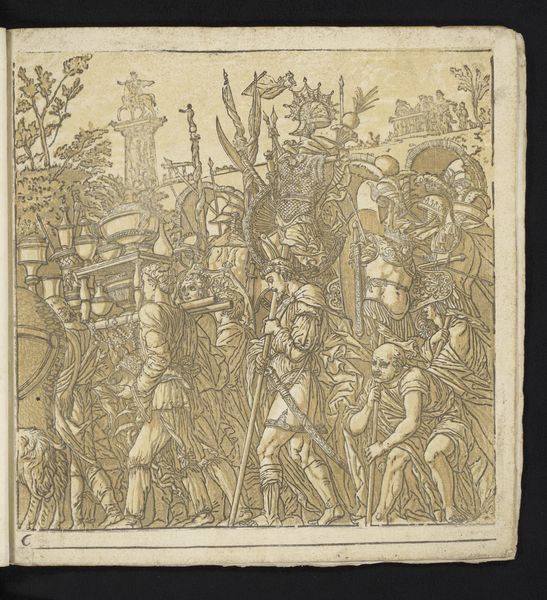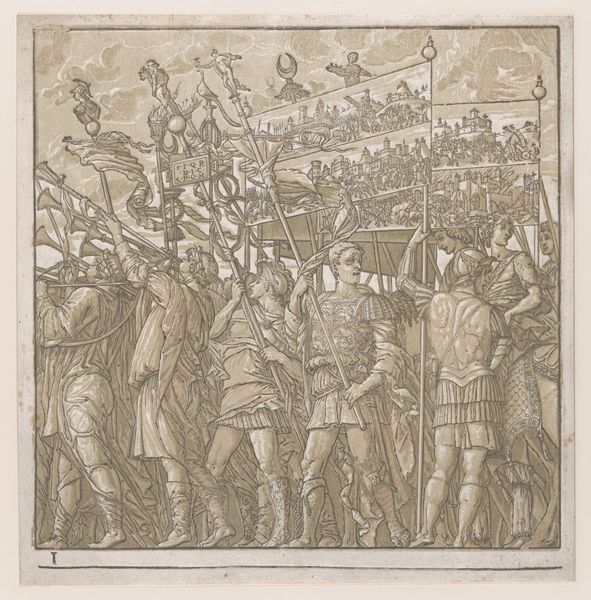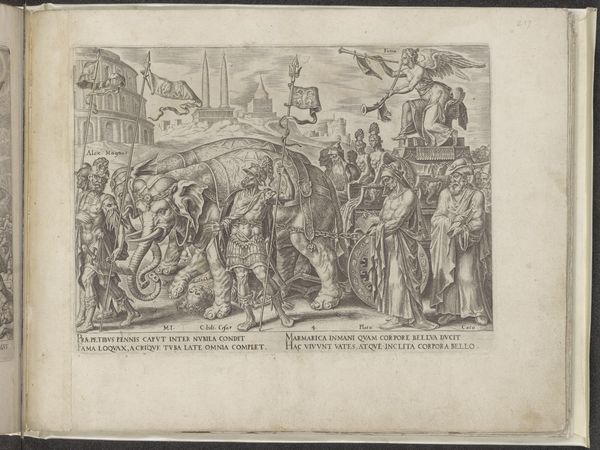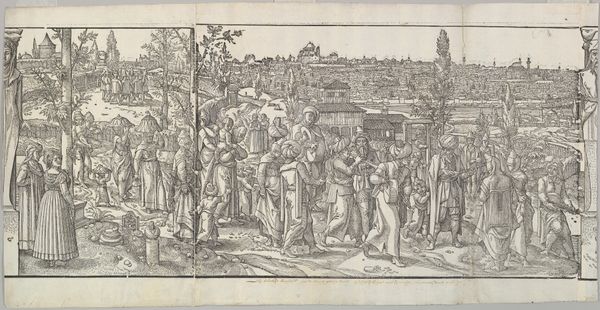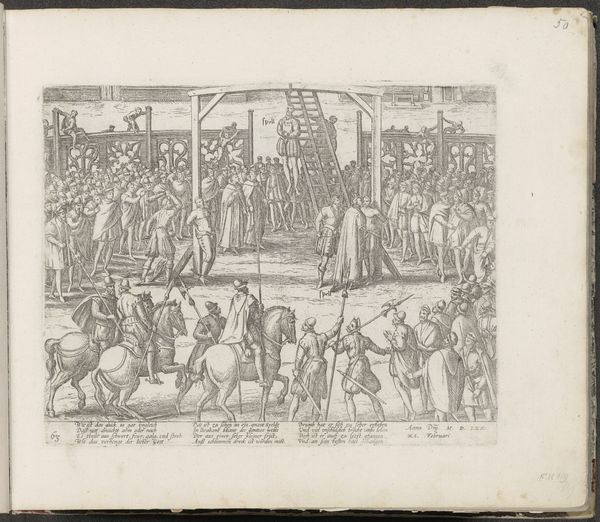
print, engraving
# print
#
figuration
#
11_renaissance
#
line
#
history-painting
#
academic-art
#
italian-renaissance
#
engraving
Dimensions: height 415 mm, width 400 mm
Copyright: Rijks Museum: Open Domain
Editor: This is Andrea Andreani's "Triumph of Julius Caesar," a 1599 engraving print in the Rijksmuseum collection. The figures seem to process in a very organized way, yet something feels slightly off-kilter to me. It has a shallow depth of field... I wonder, what do you see in this print? Curator: The piece certainly presents an intriguing study in contrasts. The formal arrangement is immediately striking; consider the use of parallel lines that define the composition and figures within the triumphal procession. What visual cues draw your eye first? Editor: I noticed the trumpets, the way the parallel lines of the trumpets almost point out of the frame, and into the viewer's space... then the architecture in the background. Is there any tension with the foreground action? Curator: Indeed. The background offers an area of higher contrast; the architecture set against the sky provides tonal variety which balances the figures occupying the picture plane. But let's examine how line quality and hatching contribute to the three-dimensional rendering of figures. How does the printmaker's hand manipulate space and form through their technique? Editor: Well, in the figures on the right the lines seem fainter and more closely spaced, so it flattens them against the plane, creating recession? Also, the parade advances to the left... is the eye naturally drawn into the depicted action in the foreground because of this? Curator: An astute observation. Notice how Andreani manages tonal gradations while relying on the intrinsic properties of line? Editor: I’m seeing now the lines making the forms! By limiting the tonal scale, my attention goes right to the artist’s technical expertise with line. Curator: Exactly. That focus truly highlights the elegance and artifice of the triumphal scene, drawing our attention to the very act of depiction, and not necessarily the subject of Caesar. Editor: So, in this case, the essence resides less in historical storytelling and more in the visual arrangement? I had missed the elegance... Now I see it! Curator: Precisely. Paying closer attention to the formal aspects provides unique insight.
Comments
No comments
Be the first to comment and join the conversation on the ultimate creative platform.

